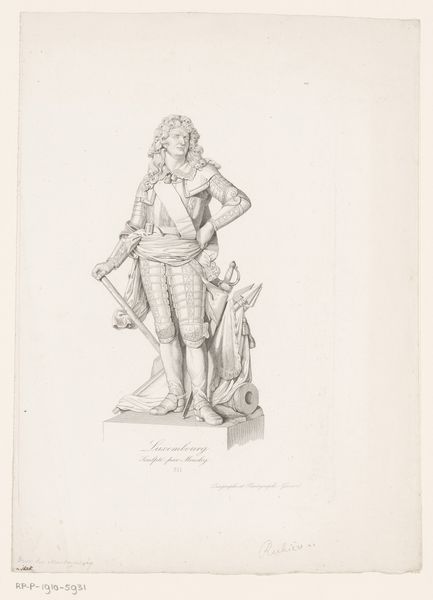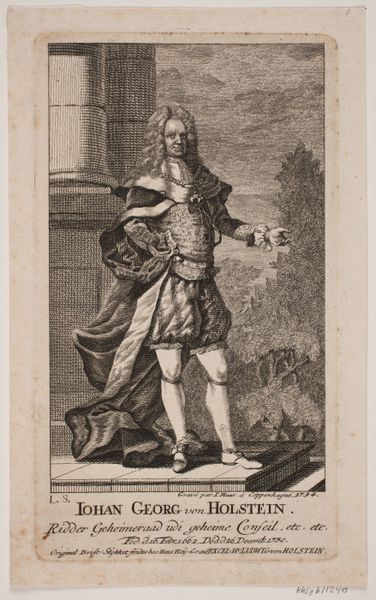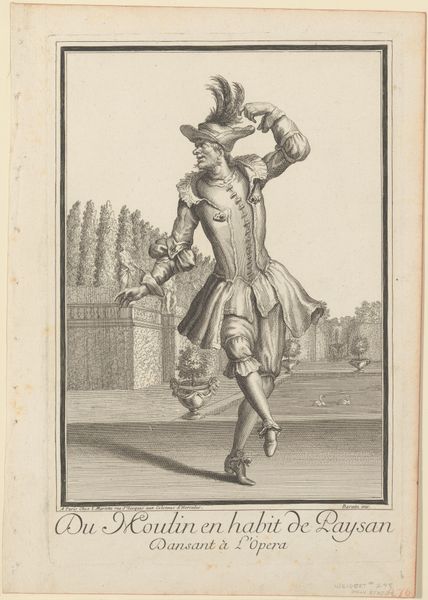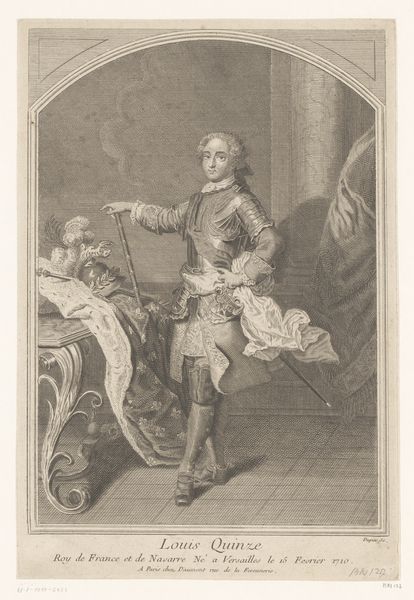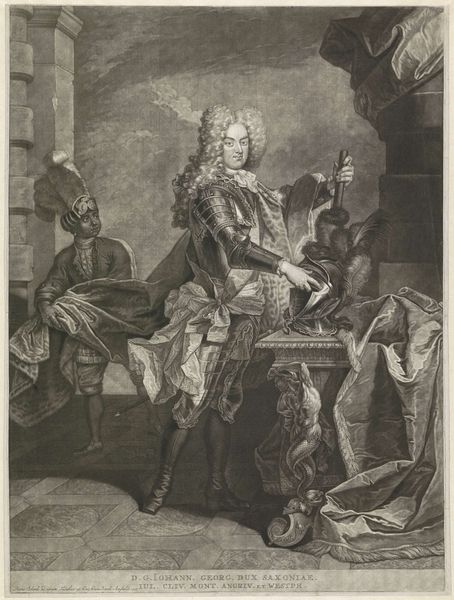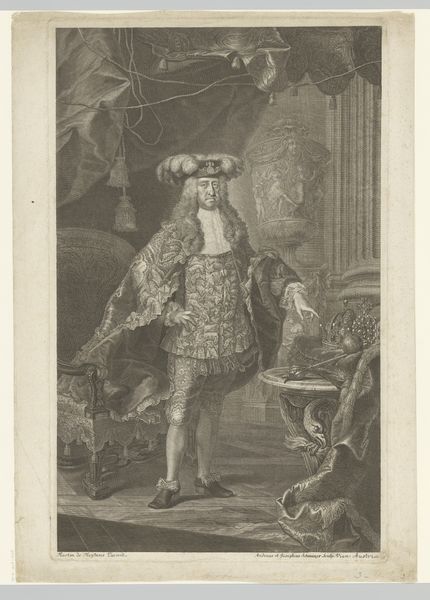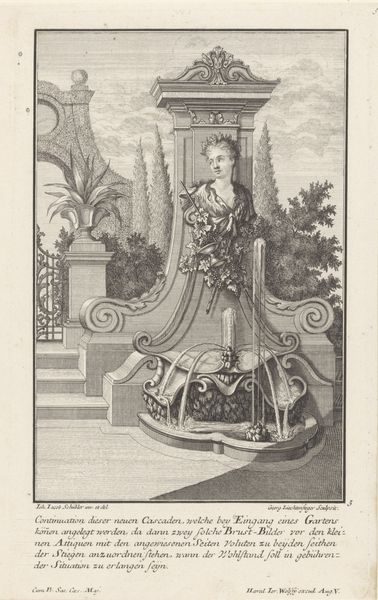
Amtmand "Gehejmeråd i Tønder" Frederik Wilhelm Holstein som dannebrogsridder i ordensdragt 1748 - 1751
0:00
0:00
drawing
#
portrait
#
drawing
#
baroque
#
history-painting
#
academic-art
Dimensions: 306 mm (height) x 194 mm (width) (bladmaal)
Curator: Marcus Tuscher created this portrait between 1748 and 1751. It depicts Amtmand "Gehejmeråd i Tønder" Frederik Wilhelm Holstein as a knight of the Order of the Dannebrog, adorned in its full regalia. Editor: My first impression is one of faded grandeur. There's something ethereal and delicate about the monochrome palette that belies the opulence it tries to capture. The meticulous detail in the ruff and the folds of fabric… it’s a study in muted extravagance. Curator: Indeed, the drawing itself offers a lens into the construction of power. The Order of the Dannebrog was a significant marker of status, connecting Holstein to the Danish monarchy and its networks of influence. Consider how dress and its portrayal could shape social perceptions of individuals. Editor: And it’s more than just a symbol. Look at how Tuscher positions Holstein, not centrally, but slightly off, yet he still dominates the frame. I wonder about the gaze...distant and controlled, with a hint of self-awareness, even vulnerability. Does this speak to the performativity inherent in these public roles? Curator: I agree. By focusing on such details, Tuscher highlights the societal expectations placed upon individuals in positions of power, especially within the context of the Baroque era's rigid hierarchies. Furthermore, portraits like this were integral in shaping identity narratives for future generations, emphasizing lineage and honor. Editor: It feels staged. As though the artist were attempting to immortalize a historical character, a role. The loose flowing clothing around a rigid figure, he is confined within the trappings of an aristocratic lifestyle. But there’s life, somehow—a breath—beneath all those layers. Curator: It's interesting how you note that sense of breath. Viewing such works with contemporary intersectional theory reminds us to critique the construction of historical narratives and consider the voices that were often marginalized. Editor: I walk away contemplating the weight of such roles, of how we negotiate between personal truths and performative demands… It feels surprisingly relevant today. Curator: Absolutely. These portraits are more than just historical documents, they offer insights into the continuing relevance of identity, power, and representation within our society.
Comments
No comments
Be the first to comment and join the conversation on the ultimate creative platform.

